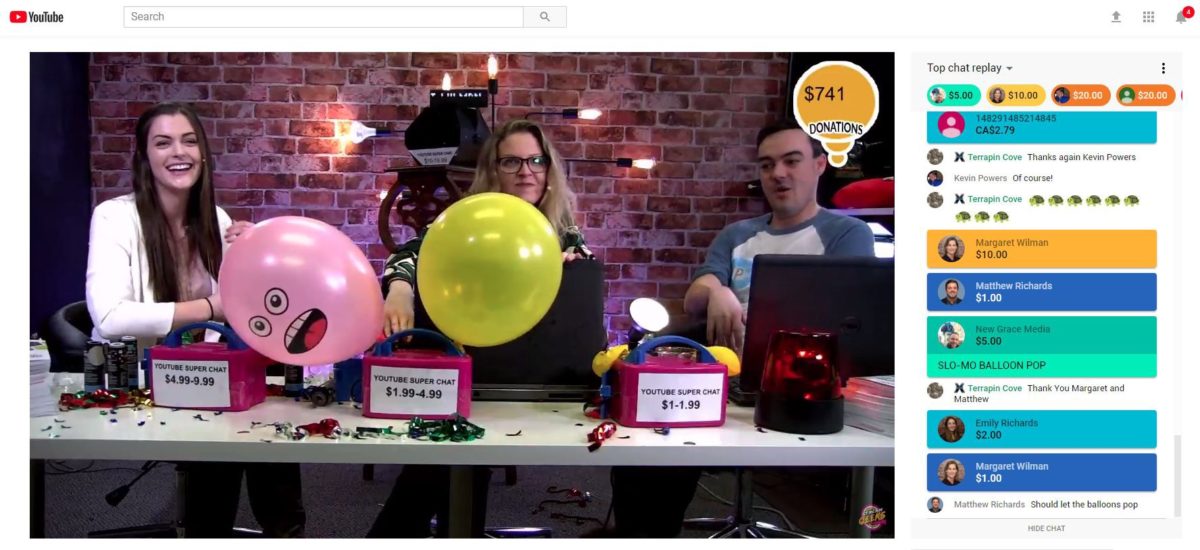
This article is sponsored by PTZOptics and was reviewed before publication.
As people around the world adjust to a new reality of life under self-quarantine in the wake of the coronavirus outbreak, in-person events have come to a screeching halt.
Although it’s projected that the global in-person events industry will grow to $2.33 trillion by 2026, since the outbreak, event industry organizers have scrambled to cancel or postpone major conferences, with even the 2020 Olympics now scheduled to happen in summer 2021. With social distancing becoming the new norm, many rely on Zoom or Google Hangouts to connect with coworkers, family and friends.
So, what does it mean for companies, event planners and organizers as the industry shifts to digital in light of the current crisis?
“Now is the time to pivot to livestream,” said Paul Richards, chief streaming officer of PTZOptics and author of the new ebook “The Virtual Ticket: The Event Manager’s Guide to Live Streaming.” “Most planners and organizers want to continue, but due to the pandemic, they have to look at other ways to showcase their events and conferences quickly through live streaming. They can do that and take their viewers on a digital experience.”
A self-professed “livestreaming evangelist,” Richards has worked at the Downingtown-based manufacturer for livestreaming and video conferencing cameras and services since 2013. In promoting PTZOptics’ cameras, he and his teammates began to use their own products to market their services, finding success after launching a popular YouTube channel and Facebook live streams. Richards is now an influencer and thought leader in the livestreaming industry, having created the StreamGeeks Summit last year.
“We started to see more and more people in the in-person events industry who wanted to learn about how to launch a private livestream and sell virtual tickets,” Richards said. “We created a course on Udemy and it really took off.”
Thus, an idea was born: to release an ebook geared to event organizers on how to capitalize and profit off of livestreams.
Composed of case studies from companies that have used PTZOptics cameras along with Richards’ and his team’s own experiences, the book provides readers with ways to develop virtual experiences worth paying for.
“The book ultimately is about how to create well-designed events that can easily transport viewers into an immersive experience using livestreaming technology,” Richards said. “I want people to come away with a strategy on how to gain their audience’s attention, focus, engagement, reaction and eventually a transformation that achieves their goals in virtual events.”

Paul Richards and his book. (Courtesy photo)
Richards describes in the book that livestreaming is a rewarding strategy for many companies, especially nonprofits, to tap into additional revenue streams. In Chapter 15, “Putting the Fun Back in Fundraising,” he details ways that nonprofits reap millions online using social media and live broadcasts to engage their audiences. He also writes about his own experience helping to raise over $1,000 last year for the Crime Victims Center in West Chester.
“We did a livestream using confetti cannons, bubble machines, and really engaging digital triggers that rewarded folks who gave to the nonprofit,” Richards said.
Chris Neto, an audiovisual technician with over twenty years experience and a market development manager for Starin Marketing, is helping Richards modernize a virtual ticket experience for the 2020 InfoComm show. He sees the value for companies looking to dive into livestreaming, especially now as high-quality audiovisual technologies are readily accessible to many.
“The best thing organizers and planners can do is to invest in exceptional quality in their events. You want to make the audience member feel like they are a part of it, so by putting a greater emphasis on better cameras, sound quality and crew, you’ll see an immediate impact to your virtual event.”
Aubrey Russell, head of production for LiveX, knows firsthand the power of livestreaming. As one of the main people behind Times Square New Year’s webcast each year and a past speaker during the StreamGeeks Summit, she sees how this book could be a resource for a lot of companies.
“A lot of businesses are hurting for lack of in-person communication, and livestreaming bridges that gap for them,” she said. “This book helps to expand the knowledge of those who might be unfamiliar with or wary of livestreaming.”
With many in-person events cancelled or rescheduled, livestreaming can provide an option for planners and companies to develop their audiences in ways that they haven’t before.
“The events industry can take a note from what’s happening to the world during the coronavirus,” Richards said. “They need to understand how to deliver an engaging experience around the product and service that is being offered virtually, and by livestreaming, companies can do that.”
Read the free ebookJoin the conversation!
Find news, events, jobs and people who share your interests on Technical.ly's open community Slack

Philly daily roundup: Jason Bannon leaves Ben Franklin; $26M for narcolepsy treatment; Philly Tech Calendar turns one

Philly daily roundup: Closed hospital into tech hub; Pew State of the City; PHL Open for Business

A biotech hub is rising at Philadelphia’s shuttered Hahnemann Hospital campus


